Discover the importance of drug testing in the workplace and gain a comprehensive understanding of its impact.
The Significance of Drug Testing in the Workplace
Drug testing in the workplace plays a crucial role in ensuring a safe and productive work environment. It helps employers identify employees who may be under the influence of drugs, which can impair their ability to perform their job duties effectively and may pose a risk to themselves and others. By implementing a drug testing program, employers can deter drug use, promote a culture of safety, and protect their employees and customers from potential harm.
Additionally, drug testing can help employers identify and address substance abuse problems among their workforce. It serves as a preventive measure by deterring employees from using drugs and providing opportunities for those who may be struggling with substance abuse to seek help and treatment. By identifying and addressing substance abuse issues, employers can support their employees' well-being and contribute to their overall success and productivity in the workplace.
Types of Drug Tests Employers Use
Employers have several options when it comes to drug testing methods. The most common types of drug tests used in the workplace include urine tests, hair tests, saliva tests, and blood tests. Urine tests are the most widely used method as they are cost-effective and can detect recent drug use. Hair tests provide a longer detection window and can detect drug use over a period of several months. Saliva tests are less invasive and can detect drug use within a short time. Blood tests are the most accurate method but are typically used in situations where immediate drug use needs to be confirmed, such as post-accident testing.
Each type of drug test has its own advantages and limitations, and employers should consider factors such as cost, detection window, and the specific needs of their workplace when choosing a drug testing method.
Legal Considerations and Employee Rights
While drug testing in the workplace can be an effective tool for maintaining a safe and productive work environment, it is important for employers to be aware of and comply with legal requirements and respect employee rights. Laws regarding drug testing vary by jurisdiction, so it is essential for employers to familiarize themselves with applicable federal, state, and local laws.
In general, drug testing should be conducted in a fair and non-discriminatory manner. Employers should have a clear drug testing policy in place that outlines the circumstances under which testing may be conducted, the procedures for conducting the tests, and the consequences of a positive test result. Additionally, employees should be provided with information about their rights and the confidentiality of their test results.
It is also important for employers to consider the potential impact of drug testing on certain protected groups, such as individuals with disabilities who may be using prescribed medications. Reasonable accommodations should be made to ensure that these individuals are not unfairly affected by drug testing policies.
Benefits of Implementing a Drug Testing Program
Implementing a drug testing program in the workplace offers several benefits for employers. Firstly, it helps create a safer work environment by deterring drug use and minimizing the risks associated with impaired employees. This can reduce accidents, injuries, and potential legal liabilities.
Secondly, drug testing can improve employee productivity and performance. By identifying and addressing substance abuse issues, employers can help employees overcome challenges and improve their overall well-being. This, in turn, can lead to increased job satisfaction, reduced absenteeism, and higher morale among the workforce.
Furthermore, drug testing programs can also help protect the employer's reputation and brand. By demonstrating a commitment to safety and a drug-free workplace, employers can enhance their image and attract potential customers and business partners who value a responsible and trustworthy organization.
Overall, implementing a drug testing program can have a positive impact on both the employer and the employees, promoting a healthy and productive work environment.
Best Practices for Drug Testing in the Workplace
To ensure the effectiveness and fairness of drug testing in the workplace, it is important for employers to follow best practices. These include:
1. Developing a comprehensive drug testing policy that is communicated to all employees.
2. Conducting drug tests in a consistent and non-discriminatory manner.
3. Using certified laboratories and trained professionals to conduct the tests.
4. Ensuring the confidentiality and privacy of test results.
5. Providing support and resources for employees who test positive, such as employee assistance programs and access to treatment options.
6. Regularly reviewing and updating the drug testing policy to align with changes in laws and regulations.
By adhering to these best practices, employers can maximize the benefits of drug testing while minimizing potential legal risks and ensuring a fair and transparent process for employees.

.png?width=500&height=500&name=Blue%20and%20White%20Classic%20Shield%20Financial%20with%20Star%20Logo%20Design%20(1).png)


